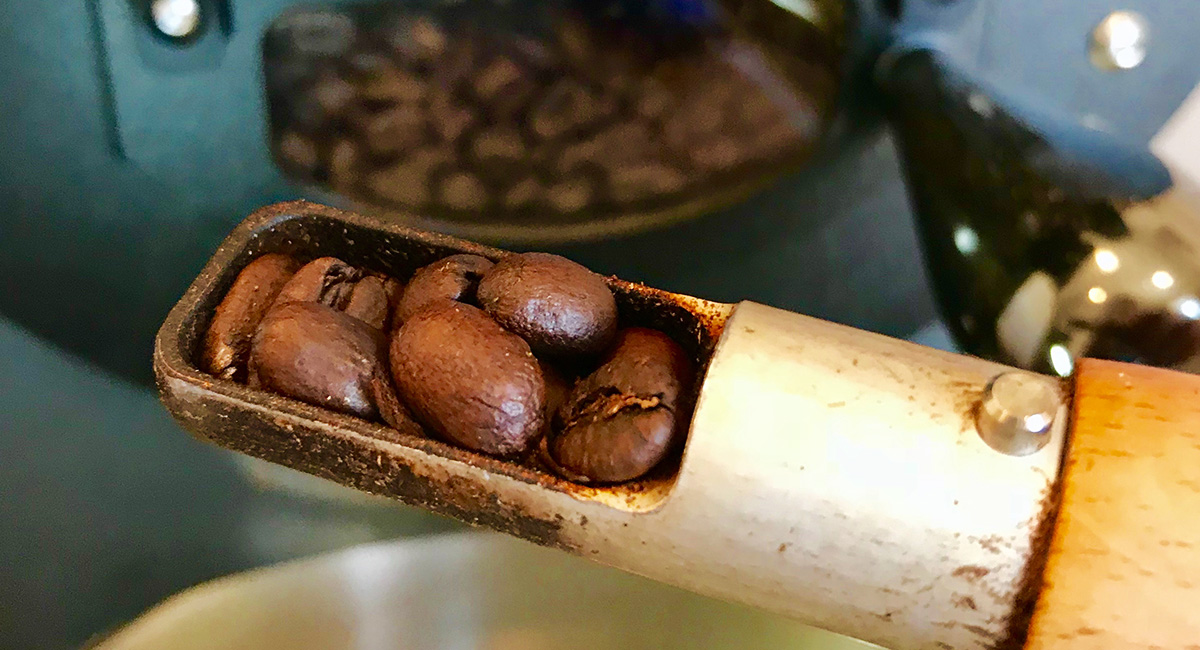Today, roasting coffee is an exciting combination of artisanal touch and scientific observation. On the one hand, traditional methods like sight and smell are used to monitor the development of each roast. On the other hand, numerous sensors on new age roasters like the Aillio Bullet R1 (seen below) display dashboards of graphs and numbers to keep your roast in check. Here’s a sneak peek into roasting at SlackTide Coffee Roasters.
Roasting at SlackTide currently is done on the cutting edge Aillio Bullet R1. Each roast is “small batch,” completing one to two orders only. This custom approach to roasting is the cornerstone of the P.E. philosophy and allows precise attention to be paid to each coffee lover’s order. Here’s a breakdown of the operation.
SlackTides.’s single origin offerings (seen below) are sourced from a green bean coffee importer out of New York, NY called Genuine Origin. Genuine Origin supplies “specialty” grade coffee (remember 80+ cupping score) and works directly with coffee farmers at origin to ensure high quality and above average compensation. Adequate pay for farmers is a very important hot topic in the coffee world, but I will save this for a future newsletter!
Our coffees are roasted light, medium, and dark depending on the origin. Theses “roast profile” are achieved based on the length of time the coffee roasts as well as the temperature that the beans reach. As you may imagine, darker roasts are roasted for longer periods of time and reach higher internal temperatures, and vice versa for lighter roasts. So, the R1 temperature is preset, the Aillio software is running, the green beans are dumped into the hopper — we are roasting, but what’s happening?
The green beans rotate in the 330 degree Fahrenheit spinning “drum” and begin to heat up quickly, soon to undergo both chemical and physical changes. The “browning” effect, known in the food industry as the Maillard Reaction or charring, results in beans changing from green to yellow, to light cinnamon tan, to caramel brown, and finally to dark brown. Along the way, the aroma shifts from toast/baked bread to honey/sweetness. As the beans darken, sugars caramelize and fats transform to oils. At darker roast levels, oils coat the beans in a glossy, wet shine. Proper timing of the browning and caramelization reactions produce a well balanced final cup of coffee.
In addition to color change, audible cues are very important indicators during the roasting cycle. As the roast reaches a tan/light brown color (6-8 minutes, ~385°F) popcorn-like popping called the “first crack” takes over in a frenzied fashion. This crackling last for about 2 minutes and is the result of increased pressure from expanding moisture within the beans. This expansion causes each bean to physically crack and to double in size! A light roast profile is created with the first crack and may be stopped and brewed if desired. Failure to reach a timely first crack will result in baking, not roasting, the beans. After the first crack comes a second crack (~440°F), which is a softer physical cracking sounding like rice Krispies in milk. Coffee oils are released from their bean chamber at second crack and at this point the roast becomes dark. Medium roasts finish in between the first and second cracks.
This article breaks down a general framework, but coffee roasting is complex! As we know, coffee beans vary dramatically. Coffee Arabica has countless varietals grown at many elevations in differing climates with limitless soil compositions…etc. So, each roast is that much different. There will always be opportunities to learn and grow as a roaster, and that is what continually makes it exciting!



Leave A Comment